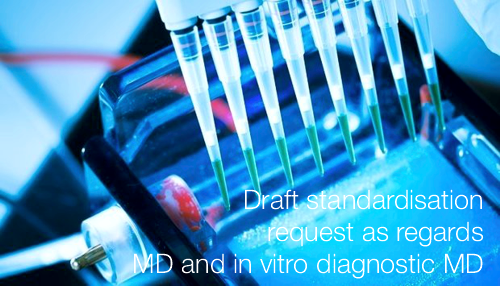Informazione tecnica HSE / 25 ° anno
/ Documenti disponibili:
45.538
/ Documenti scaricati: 34.364.286
/ Documenti scaricati: 34.364.286
EU, 29 Aprile 2020
MDCG 2020-9 Regulatory requirements for ventilators and related accessories Medical Device Directive 93/42/CEE.
The World Health Organization (WHO) declared the COVID-19 outbreak a pandemic on March the 12th 2020. Patients infected by SARS-CoV-2 virus and developing the COVID-19 disease with acute and severe respiratory symptoms have to be treated with mechanical ventilators to assure possibilities of survival. This guidance document focuses on ventilators and related accessories that are currently regulated under the Council Directive 93/42/EEC (MDD). According to the MDD, devices may be placed on the market and/or put into service only if they comply with the requirements laid down in this Directive when duly supplied and properly installed, maintained and used in accordance with their intended purpose.
The devices must meet the essential requirements set out in Annex I of the MDD, which apply to them, taking account of the intended purpose of the devices concerned. In addition, devices may be placed and circulate on the European single market if they have been subject to a conformity assessment in accordance with the provisions of Article 11 of the MDD.
Under the current COVID-19 context, the demand for ventilators and related accessories has rapidly increased. Therefore, this document intends to outline the different regulatory options for placing these devices on the EU market indicating their feasibility to allow short-term supply.
_____
TYPES OF MEDICAL DEVICES AND THEIR PARTS/COMPONENTS
Ventilators
Ventilators are breathing support devices and can fall into different types according to their intended use and characteristics
Ventilators for critical care are usually invasive, which enables the ventilator machine to provide lung support for inspiration and expiration through tracheal intubation. However, most critical care ventilators allow non-invasive ventilation modes for critical care patients as well. Ventilators for non-critical care are usually non-invasive and therefore provide air pressure support to natural breathing through e.g. a facemask.
Ventilators may offer different types of additional complementary functions that include:
- High flow oxygen supply (nasal high flow therapy);
- Monitoring systems;
- Nebulisation systems.
...
CLASSIFICATION
Ventilators
There are different types of ventilators depending on the degree of invasiveness and the setting in which they are used in (e.g. Intensive Care Unit - ICU). Ventilators fall under two different classes in accordance with rule 11 (or rule 9) of Annex IX6,7 to the MDD:
- Class IIa: only applicable to non-invasive devices, e.g. continuous positive airway pressure – CPAP non-intended for critical care, or devices that only support spontaneous breathing.
- Class IIb: applicable to most ventilators.
The classification depends on the intended purpose of the ventilator and has important implications in the selection of appropriate conformity assessment procedure(s) for the device including timing and complexity (see section 4 for details).
[...] Segue in allegato
Fonte: EU
Collegati:

EU, October 2020
Article 1 Requested standardisation activities
1. The European Committee for Standardizat...

Report 37 del 16/09/2022 N. 04 A11/00104/22 Ungheria
Approfondimento tecnico: Altalena in legno
Il prodotto LEAGAN MARE / NAGY HINTA, barcode 642...

Report 50 del 13/12/2024 N. 64 A12/03512/24 Svezia
Approfondimento tecnico: Articolo decorativo
Il prodotto, barcode 6982663249283, è stato ...
Testata editoriale iscritta al n. 22/2024 del registro periodici della cancelleria del Tribunale di Perugia in data 19.11.2024